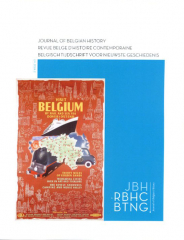
Journal of Belgian History, LIV, 2024, 2
This second issue of 2024 contains four separate articles. In the first (English-language) article, Silke Geven (PhD, University of Antwerp) and Gerrit Verhoeven (FED-tWIN researcher, University of Antwerp and Royal Museum of Art and History) link the study of tourism policy in Belgium to the insights of nationalism studies. This article examines how that awareness about the importance of tourism for national identification evolved and exactly which (Belgian or Flemish) nationalism was intended to be promoted. In turn, historian and archivist Davina Beckers (advisor-archivist for the company Exquando at the Historical Archives Service at the European Commission) applies micro-analysis to the post-war punishment of collaboration in the East Cantons. Through an individual case study, namely of the collaborating woman Sybille Bredohl, she examines how the Belgian military justice system dealt with this particular category of German-speaking collaborators during World War II. The third contribution comes from Dutch historian Kris van der Aar (Master of History and Research Master of Historical, Cultural & Literary Studies, Radboud University in Nijmegen), who makes an important contribution to the history of administrative purges, more specifically in the Belgian railways. Van der Aar uses linguistic analysis and comes up with new explanations for the mild purge among SNCB/NMBS-personnel after the war. The fourth and final article comes from doctor of history Bruno Yammine.He presents new insights on Flemish Activism during the First World War. Yammine concludes that contrary to the current dominant view in research, the so-called Flemish declaration of autonomy of December 1917 was not an autonomous decision of the 'Council of Flanders'. On the contrary, he argues that Governor-General von Falkenhausen, with the support of the German army leadership, supported the initiative, as the next logical step of German Flamenpolitik.